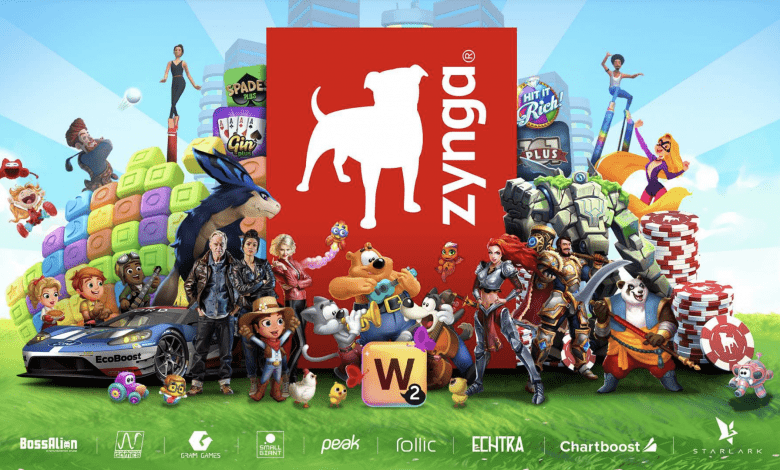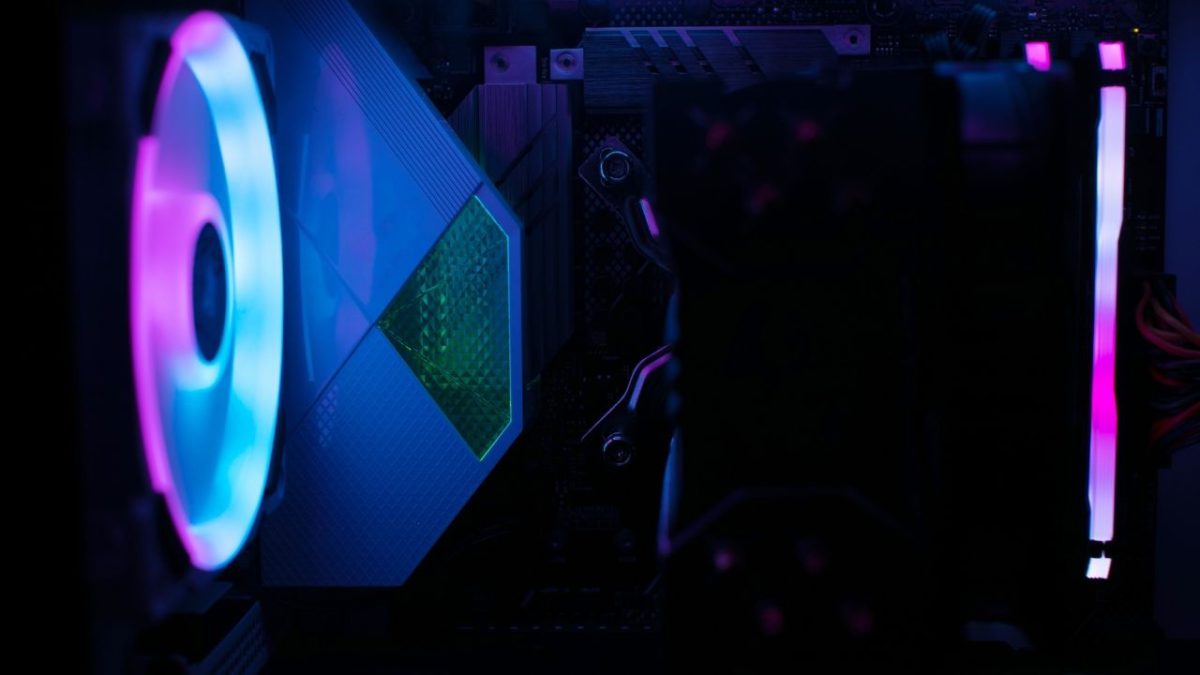How Blockchain Gaming Can Take Over Traditional Gaming?
Gaming is a profitable entertainment industry segment, with consumer spending expected to increase by 8% to $60.4 billion in 2021 in the United States. In 2021, the global games market was expected to produce $180.3 billion, up 1.4 percent over the previous year. The hugely popular play-to-earn blockchain gaming falls into this category, and they’re growing even faster than they were two years ago. On the other hand, is blockchain gaming good enough to compete with more traditional gaming?
According to The Blockchain Game Alliance’s annual report for 2021, NFT games produced $2.32 billion in revenue, accounting for 22% of all NFT trading volume. The most buzz was generated by Axie Infinity, which became the first blockchain game to surpass $1 billion in NFT sales because of its widespread appeal in the Philippines during COVID-19 lockdowns.
According to the survey, 68 percent of BGA members believe the P2E sector is responsible for growth, and 85 percent believe actual ownership of digital products in games is the secret sauce driving blockchain gaming success.
Jack Boreham, editor-in-chief of Metaverse Insider, has been watching the developments for the past two years and expects that conventional publishers will adopt blockchain gaming — or NFT games, as he prefers to call them.
“The beauty of NFT games is that they flip the institutional hierarchy of video gaming,” adds Boreham, “such that power comes from the bottom up from decentralized gamers rather than the executives.” “And certainly, huge names will come in, but not for a few years, and the first ones will most likely be the more off-center companies like Nintendo.”
The Top 6 NFT Games to Follow in 2022
👇@AxieInfinity, @DuelistKingNFT, @Ethermorelore @TheSandboxGame @decentraland @TheNestArcadehttps://t.co/16N16B4DPx#Metaverses #CryptocurrencyNews #NFTGame #NFTGaming
— Metaverse Insider (@Metav_Insider) February 4, 2022
Is it simply a case of P2E prodding traditional video games, or will the two streams collide, combine, or be consumed by one another? Larger companies like Ubisoft, Square Enix, and Sega have already put their toes in the water by offering NFTs, but conventional gamers have reacted negatively. Gachapon is one of Lepricon’s initial games, in which players are given mysterious NFTs via the gachapon machine.
Traditional gamers meet the gamers of the future.
Phil Ingram, a long-time player and CEO of Lepricon, a blockchain-based gaming platform, is optimistic about peer-to-peer gaming if the games improve.
“We need to make blockchain gaming more like video gaming if gaming is going to be the first killer [app] to on-ramp people for broad adoption,” he argues.
“P2E is similar to grinding in video games, where you must defeat several monsters or repeat actions in order to advance to the next level. It’s a whole different experience, and nobody plays video games to grind.”
P2E can now get away with some very unpleasant gameplay because all awards or assets acquired or won in the game belong to the player. “Blockchain is all about owning assets and the fact that you can’t lose them unless you leave your private keys at a bus stop.” “This is the point at which a subtle change from publisher-first economies to player-first economies becomes possible,” he explains.
“The issue is that blockchain dictates games rather than the other way around.” Indeed, the majority of blockchain games are merely glorified platforms for the sale of NFTs.”
Street Food Pinball is a game created by Lepricon. A hypercasual, free-to-play, earn-by-playing platform with games like pinball is in the works.
On the subject of gaming
Surprisingly, grinding is something that On Yavin enjoys. In fact, he refers to it as his particular mindfulness practice. According to legend, Yavin is a long-time gamer who was born with a keyboard in his hand and had a special affinity for World of Warcraft. He still plays between 30 and 90 minutes every day.
“One of my responsibilities is to conduct due diligence on new games to see whether or not we should invest in them. “What started out as a hobby has turned into a full-time job.”
For Yavin, there are three fundamental characteristics that must be present for every game to be effective. The first is the plot, and the second is the game’s mechanics — how it’s put together — and how it plays out.
“Then there’s the quality of the graphics and images, which plays a big role in how successful the game is.”
MMOs, or massively multiplayer online games, are also very popular.
“When I first started gaming, I was playing against the machine, which could be sterile,” Yavin explains. “Now that I’m playing in an MMO, the gameplay is quite different and a lot more thrilling because I’m playing against or with other people.” That, as well as the social aspect. Gamers form guilds to manage collaborative actions. Your one mistake, you can kill the entire team. But if everything goes well, you’ll be talking about that particular operation for weeks.”
Yavin played Axie Infinity as part of his job, which he found calming (see the note on grinding above). While money is not a motivator for him, he believes it is unjust that he has spent thousands of hours on a traditional game in which the game owners still retain the assets.
Most P2E games, according to Yavin, are not enjoyable. He apologizes for the language and says, “Actually, most are garbage.”
Moonray, an action-RPG blockchain game, was also backed by Cointelligence Fund.
James Stell, the head of investing at Block Pioneers, a venture capital business that invests in games and esports gambling, is himself a gamer. He, like Yavin, appreciates the social aspect of gaming. Stell spends two to three hours after work playing video games, which she equates to watching television.
Also, read – The Complete Guide to Blockchain Gaming and How it Could Revolutionize the Industry
Call of Duty is Stell’s poison of choice, which he plays with a bunch of real-life buddies. He also runs a tavern near London Bridge, which is his second company. Because his crypto pals hang out at his bar, and he also arranges events linked to crypto interests, he hears a lot of news about P2E as a friendly bartender.
“However, the previous time we attempted to throw an event for Axie Infinity, the invite list grew too enormous, and they were forced to relocate to a larger facility.”
Given that there are quicker ways to earn more money, Stell does not envision current incarnations of P2E being tremendously popular in the United Kingdom and other Western countries. He does, however, consider the emerging peer-to-peer gaming market as quite inventive.
“The big traditional gaming studios with big war chests are undoubtedly looking at the market.” They’ve expressed interest in NFTs, but they’re not going to kill the golden goose by throwing earnings away before they have to. They will, however, arrive sooner rather than later.”
Stay informed with daily updates from Blockchain Magazine on Google News. Click here to follow us and mark as favorite: [Blockchain Magazine on Google News].
Get Blockchain Insights In Inbox
Stay ahead of the curve with expert analysis and market updates.
latest from tech
Disclaimer: Any post shared by a third-party agency are sponsored and Blockchain Magazine has no views on any such posts. The views and opinions expressed in this post are those of the clients and do not necessarily reflect the official policy or position of Blockchain Magazine. The information provided in this post is for informational purposes only and should not be considered as financial, investment, or professional advice. Blockchain Magazine does not endorse or promote any specific products, services, or companies mentioned in this posts. Readers are encouraged to conduct their own research and consult with a qualified professional before making any financial decisions. The featured image used is just a creative depiction of the title and it does not intend to hurt sentiments of any person or institution. If it hurts anyone sentiments, please do not hesitate to reach out to Blockchain Magazine.

 Bitcoin
Bitcoin  Ethereum
Ethereum  XRP
XRP  Tether
Tether  Solana
Solana  Dogecoin
Dogecoin  USDC
USDC  Cardano
Cardano  Lido Staked Ether
Lido Staked Ether  TRON
TRON  Chainlink
Chainlink  Avalanche
Avalanche  Wrapped stETH
Wrapped stETH  Stellar
Stellar  Wrapped Bitcoin
Wrapped Bitcoin  Sui
Sui  Hedera
Hedera  Toncoin
Toncoin  Shiba Inu
Shiba Inu  WETH
WETH  Polkadot
Polkadot  Parkcoin
Parkcoin  LEO Token
LEO Token  Litecoin
Litecoin  Bitcoin Cash
Bitcoin Cash  Bitget Token
Bitget Token  Uniswap
Uniswap  Official Trump
Official Trump  Hyperliquid
Hyperliquid  Wrapped eETH
Wrapped eETH  Pepe
Pepe  USDS
USDS  NEAR Protocol
NEAR Protocol  Ethena USDe
Ethena USDe  Aave
Aave  Aptos
Aptos  Internet Computer
Internet Computer  Ondo
Ondo  Ethereum Classic
Ethereum Classic  Monero
Monero  POL (ex-MATIC)
POL (ex-MATIC)  OKB
OKB  Cronos
Cronos  Mantle
Mantle  Dai
Dai  Algorand
Algorand  MANTRA
MANTRA  Render
Render 



